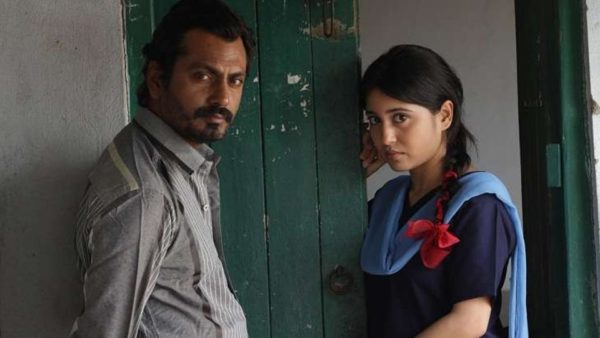The Censor Board objected to the ‘bold’ content of Haraamkhor because they thought the Indian audience was not ready for such experimental cinema. This forced the makers to make a legal appeal before the Film Certification Appellate Tribunal, which delivered the verdict in the movie’s favour.
Now that the film is released, the board will have to explain why they thought the film was not suitable for Indian audiences. Probably because Haraamkhor can connect with most of us. And it’s told sensibly.
While what happens between Shyam Tekchand (Nawazuddin Siddiqui) and Sandhya (Shweta Tripathi) in this indescript North Indian village is undeniably shocking, we have witnessed such things around us. From tutors touching their pupils inappropriately to students getting infatuated with their teachers, we have seen it all.
Did you not know a teacher infamous for his temper? Wasn’t there a classmate who once wrote a love letter with his blood? Also, there was a time when we all wanted to explore our sexuality – wasn’t there?
I grew up in a place where a forest ranger was once beaten up for luring small kids to his secluded house. There, people chuckled when unmarried women visited doctors but remained tongue-tied when they were found dead under mysterious circumstances. In short, beyond our urban borders is a whole world where Haraamkhor would appear like a reflection of daily life.
All these people are real. They have grown up as somebody who looks at sex with suspicion, but has a hard time containing his lust. Not knowing how to go about it, they remain frustrated, deprived and depraved.
Shyam has a volatile temper, and beats up adolescent girls in anger. He tries his best to fool his wife (yes, he is married) but is also conscious of his ‘sins’.
It’s a complex narrative: Semi-urban Indians dealing with the loneliness of their lives, looking for the shortest way out. Societal fear is probably the most potent tool for keeping things from falling apart. As is the case in most of mofussil India, policemen are regarded with dread. But even that doesn’t stop Shyam from taking advantage of Sandhya.
He is a predator, much like Ramanna of Raman Raghav 2.0 but not as blunt. Not yet. Also, director Shlok Sharma plays with angles of perception – you can’t easily spot the culprit, it can be done only with the help of existing social norms. You know the girl is infatuated and everything happening before you is consensual, but it’s still wrong. Why? Because the law says so.
Because the law’s like that.
Siddiqui is at his deceptive best. He plays a sexual offender to perfection, but you can’t judge him instantly. Your opinion of Shyam may change if the government decides to lower the age of consensual sex to 15.
Sharma smartly weaves the story from the perspective of two kids who study in Sandhya’s class. They are fast losing their innocence, but then, they were never supposed to remain immature – at least not in circumstances such as these.
The concept of protected childhood is not heard here. Sandhya’s juvenile behaviour and urge to understand her body better are visible. The shaky camera and wide minimalist frames make her life seem even lonelier. It’s a role Tripathi should be proud of. Masaan was no fluke.
Brave and original, Haraamkhor walks the razor’s edge. One tiny mistake, and it could have been pronounced morally twisted. Some may call it immoral even now.
However, Haraamkhor is one film you just shouldn’t miss, even if it’s just to see how Hindi cinema is exploring new themes with finesse.



Leave a reply